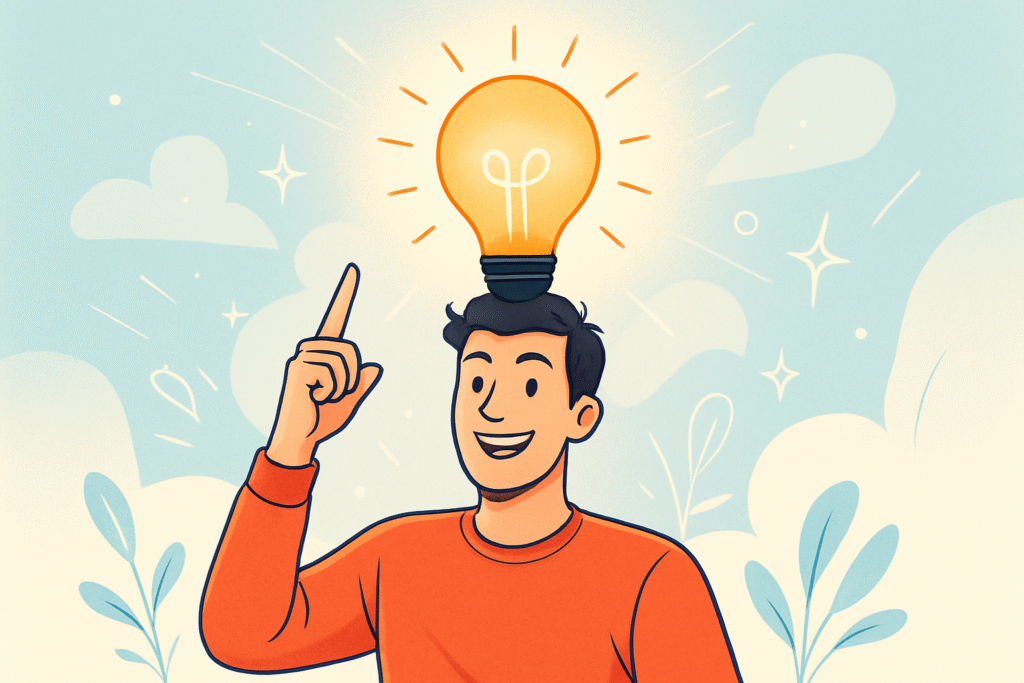
Are you someone who believes creativity is a magical gift bestowed upon a select few?
Do you often find yourself thinking, “I’m just not the creative type”?
If so, you’re not alone.
Many people harbor self-doubt when it comes to their creative abilities.
However, what if I told you that creativity isn’t an innate talent, but a skill that can be learned, practiced, and strengthened, much like a muscle?
It’s true!
The key lies in building what’s known as creative confidence.
Creative confidence is the belief in your ability to generate new ideas and solve problems, even in the face of uncertainty.
It’s about embracing experimentation, learning from failures, and trusting your own unique perspective.
When you possess creative confidence, you’re more likely to take risks, explore unconventional solutions, and ultimately, innovate.
In this blog post, we’ll dive into some powerful exercises designed to help you cultivate your creative confidence.
These techniques, inspired by leading design thinkers, will challenge your assumptions, broaden your perspective, and help you unlock the innovator within you.
Let’s get started!

Videos are added as random thoughts 💭 💭 💭.
1. Mind Mapping: Unleash Divergent Thinking
Mind mapping is a powerful visual thinking tool that helps you organize information, generate new ideas, and explore complex topics.
It encourages divergent thinking, allowing your thoughts to branch out freely without judgment.
This exercise is perfect for when you’re feeling stuck or need to gain clarity on a particular challenge.
How to do it
1. Start with a central topic or idea in the middle of a blank page and circle it.
2. Branch out from the central idea with main themes, using keywords or short phrases.
3. From each main theme, draw sub-branches for related ideas, details, and examples.
4. Use colors, images, and symbols to make your mind map visually engaging and memorable.
5. Don’t censor your ideas; the goal is to generate as many connections as possible.
Mind mapping helps you see the bigger picture, identify connections you might have missed, and stimulate new insights.
It’s a fantastic way to warm up your creative muscles and build confidence in your idea-generation abilities.
2. 30 Circles: Jumpstart Your Ideation Session
The 30 Circles exercise is a quick and effective way to warm up your creative brain and challenge your assumptions about what’s possible.
It’s a fantastic icebreaker for groups, but equally effective for individual use when you need a jolt of inspiration.
How to do it:
1. Draw 30 blank circles on a piece of paper, roughly the same size.
2. Set a timer for three minutes.
3. Transform as many of the blank circles as possible into recognizable objects.
For example, one circle could become a sun, another a wheel, and another a clock.
4. The goal is quantity and diversity of ideas, not artistic perfection. Don’t be afraid to be silly or unconventional.
This exercise helps you break free from self-censorship and encourages rapid ideation.
It demonstrates that you can generate many ideas in a short amount of time, boosting your confidence in your ability to think on your feet.
3. Empathy Maps: Understanding Human Behavior
Empathy is at the heart of human-centered design and innovation.
An empathy map helps you synthesize your observations of human behavior and gain a deeper understanding of your target audience.
This tool is invaluable for uncovering latent needs and pain points, which are often the starting point for truly innovative solutions.
How to do it:
1. Draw a four-quadrant map on a whiteboard or large paper, labeling the sections:
“Says,” “Thinks,” “Does,” and “Feels.”
2. Based on your observations (from interviews, field studies, etc.), fill in each quadrant with sticky notes.
What did the person say? What do you think they think?
What actions did they do? What emotions do you think they feel?
3. Look for patterns, contradictions, and surprises across the quadrants. What insights emerge from this synthesis?
By systematically organizing your observations, empathy maps help you move beyond surface-level understanding to truly empathize with others.
This process builds confidence in your ability to identify real problems and create solutions that resonate with people.
4. I Like, I Wish: Encouraging Constructive Feedback
Receiving and giving constructive feedback is crucial for creative growth, yet it can often be challenging.
The “I Like, I Wish” exercise provides a simple, structured way to offer feedback that is both honest and supportive, fostering a safe environment for experimentation and improvement.
How to do it:
1. When providing feedback, start by stating what you like about the idea, prototype, or work in progress. Be specific and genuine.
2. Then, express what you wish were different or improved.
Frame your suggestions as wishes rather than criticisms, making them less confrontational and more actionable.
This method encourages a positive and collaborative feedback loop, helping you and your team members to absorb valuable insights without becoming defensive.
Practicing this exercise builds confidence in your ability to both give and receive feedback effectively, accelerating your creative development.
5. Customer Journey Map: Empathizing with End Users
A customer journey map is a visual representation of the process a customer goes through to achieve a goal with your company.
It helps you understand the customer’s experience from their perspective, identifying touchpoints, pain points, and opportunities for improvement.
This exercise is particularly useful for developing empathy and designing user-centric solutions.
How to do it:
1. Identify a specific customer and their goal.
2. Map out all the steps they take to achieve that goal, from initial awareness to post-purchase actions.
3. For each step, consider their actions, thoughts, feelings, and pain points.
4. Look for opportunities to improve the experience or introduce new solutions.
By systematically mapping the customer journey, you gain a holistic understanding of their needs and motivations.
This exercise strengthens your ability to identify and solve real-world problems, boosting your confidence in creating impactful solutions.
Infographic: Creative Confidence Building Exercises at a Glance
Conclusion: Embrace Your Creative Journey
Building creative confidence is an ongoing journey, not a destination. It requires practice, patience, and a willingness to step outside your comfort zone.
By regularly engaging in exercises like mind mapping, 30 circles, empathy mapping,
“I Like, I Wish” feedback, and customer journey mapping,
you’ll gradually strengthen your creative muscles and unlock your full potential.
Remember, everyone is creative.
It’s not about being an artist or a genius; it’s about having the courage to explore, experiment, and bring your unique ideas to life.
So, take a deep breath, embrace the uncertainty, and start building your creative confidence today.
The world is waiting for your innovative contributions!
